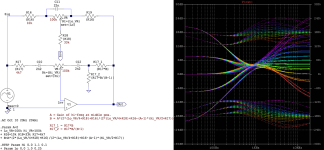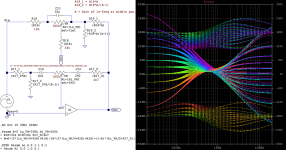Is it possible to easily "shift" a Baxandall tone stack? What I mean is, say the sweep for a frequency is -15 dB to +15 dB, and 0 dB with the pot in the middle position. What if wanted -9 dB to +21 dB, and +6 dB with the pot in the middle position? I.e. we rarely want to reduce, and only a little when we do; but we want a default (i.e. pot at noon) bump for that frequency, and a bigger boost range?


